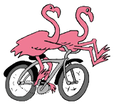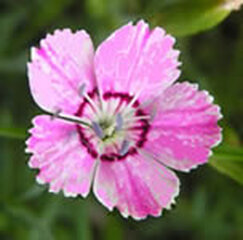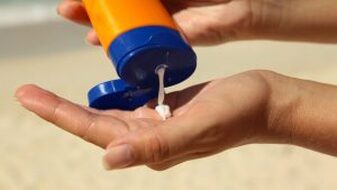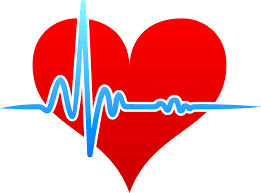In the Pink!Depending on your generation, you may be wondering what exactly In the Pink means. The phrase generally refers to being in the pink of health. In this case, pink means excellent, and to be in the pink of health means being in excellent health. I’m sure ATL fans would like to believe the reference to “pink” as excellence has something to do with our beloved pink flamingoes. Actually, the use of pink to indicate excellence dates back to admiration for the pink Dianthus flower. Here’s hoping you are all In the Pink of health!
|
One of the most important things we can do to stay In the Pink is to get enough sleep. Among other benefits, WebMD recommends getting enough sleep to help with memory, mood, heart health, immune system support, and weight control. How much sleep is enough? The CDC recommends 7-9 hours of sleep per night for those of us aged 18 to 64, and 7-8 hours for those 65 and older. More information on sleep can be found on the CDC website (https://www.cdc.gov/sleep/index.html).
So, how do we get enough sleep? Let’s start with some basic recommendations about your sleep space: think cool, dark, and quiet!
Cool: keep your sleep space 10-20 degrees cooler than your daily living space if possible—even cooler if you are going through menopause.
Dark: keep your sleep space dark – darken alarm clocks and turn off the television and other electronic devices
Quiet: keep your sleep space free of internal and external sounds as much as possible, including your TV and computer. Consider using a sleep timer for background noise machines.
Overall, better sleep means better health. Catch your ZZZs to stay In the Pink!
“In the Pink” reference: https://www.phrases.org.uk/meanings/in-the-pink.html
WebMD reference: https://www.webmd.com/sleep-disorders/benefits-sleep-more#1
CDC reference: https://www.cdc.gov/sleep/about_sleep/how_much_sleep.html
Article Provided by:
Marianne McCollum, PhD
Professor of Pharmacy Practice
So, how do we get enough sleep? Let’s start with some basic recommendations about your sleep space: think cool, dark, and quiet!
Cool: keep your sleep space 10-20 degrees cooler than your daily living space if possible—even cooler if you are going through menopause.
Dark: keep your sleep space dark – darken alarm clocks and turn off the television and other electronic devices
Quiet: keep your sleep space free of internal and external sounds as much as possible, including your TV and computer. Consider using a sleep timer for background noise machines.
Overall, better sleep means better health. Catch your ZZZs to stay In the Pink!
“In the Pink” reference: https://www.phrases.org.uk/meanings/in-the-pink.html
WebMD reference: https://www.webmd.com/sleep-disorders/benefits-sleep-more#1
CDC reference: https://www.cdc.gov/sleep/about_sleep/how_much_sleep.html
Article Provided by:
Marianne McCollum, PhD
Professor of Pharmacy Practice
According to the American Cancer Society (www.cancer.org), skin cancer is by far the most common form of cancer in the United States. These cancers are caused by exposure to UV rays, primarily from the sun. The good news is that we can take some very simple but important steps to have fun in the sun and stay healthy!
Limiting exposure to UV rays can be as simple as staying in the shade. When you are in the sun, keep in mind the simple phrase Slip, Slap, Slop®, a campaign developed in 1980 to raise awareness about skin cancer in Australia:
The Slip, Slop, Slap® campaign now includes recommendations to Seek (shade) and Slide on a pair of sunglasses that provide UV protection.
Protection from exposure to UV rays can reduce your risk of skin cancer, but early detection is essential too. Know your own skin, including your patterns of freckles and moles, and talk to your doctor about skin exams or if you see anything suspicious.
Take care of your skin while having fun in the sun, and stay In the Pink this summer!
Article Provided by:
Marianne McCollum, PhD
Professor of Pharmacy Practice
Limiting exposure to UV rays can be as simple as staying in the shade. When you are in the sun, keep in mind the simple phrase Slip, Slap, Slop®, a campaign developed in 1980 to raise awareness about skin cancer in Australia:
- Slip on a shirt. Clothing can block UV rays, and more clothing blocks more rays. A longsleeved shirt is better than a t-shirt, long pants better than shorts. Some manufacturers add coatings to fabric and provide UV protection factor (UPF) ratings for their clothing.
- Slop on sunscreen. Use a broad-spectrum sunscreen that protects against UVA and UVB rays. The Skin Cancer Foundation (www.skincancer.org) recommends a Sun Protection Factor (SPF) rating of SPF 30 or higher for prolonged or intense sun exposure. Use at least one ounce for total body protection (about a shot glass full), apply 20-30 minutes prior to exposure, and reapply every two hours. If toweling off after swimming or sweating, reapplying more often may be needed. If you are using sunscreen and bug spray, apply the sunscreen first. SPF30 lip balms are also available.
- Slap on a hat. A broad-brimmed hat provides protection for your face, ears and neck. A shade cap with fabric around the sides and back also provide good protection for the neck.
The Slip, Slop, Slap® campaign now includes recommendations to Seek (shade) and Slide on a pair of sunglasses that provide UV protection.
Protection from exposure to UV rays can reduce your risk of skin cancer, but early detection is essential too. Know your own skin, including your patterns of freckles and moles, and talk to your doctor about skin exams or if you see anything suspicious.
Take care of your skin while having fun in the sun, and stay In the Pink this summer!
Article Provided by:
Marianne McCollum, PhD
Professor of Pharmacy Practice
February is American Heart Month, kicked off each year with National Wear Red Day, the first Friday in February. National Wear Red Day, February 2 this year, is an effort to raise awareness of a very important issue for all of us: heart disease in women. According to the American Heart Association, heart disease claims the lives of more women than all cancers combined! It’s important to get your mammograms, but please, don’t forget your heart!!
What can you do? The first step is being aware of your risk for heart disease. Talk to your doctor about your heart health, and get to know your numbers—blood pressure, cholesterol, blood sugar, and body mass index. Check out this Go Red for Women web site from the American Heart Association: https://www.goredforwomen.org for more information.
In the meantime, dust off that little red dress (or sweater, or sneakers) and celebrate National Wear Red Day to support the effort to Go Red for Women! Don’t have anything red? Check out the Red Dress bling at ShopHeart.org. Lots of fun items to help you show your colors!
Article Provided by:
Marianne McCollum, PhD
Professor of Pharmacy Practice
This is the first installment of a new ATL series on health and wellness. Watch this space to stay In the Pink!
What can you do? The first step is being aware of your risk for heart disease. Talk to your doctor about your heart health, and get to know your numbers—blood pressure, cholesterol, blood sugar, and body mass index. Check out this Go Red for Women web site from the American Heart Association: https://www.goredforwomen.org for more information.
In the meantime, dust off that little red dress (or sweater, or sneakers) and celebrate National Wear Red Day to support the effort to Go Red for Women! Don’t have anything red? Check out the Red Dress bling at ShopHeart.org. Lots of fun items to help you show your colors!
Article Provided by:
Marianne McCollum, PhD
Professor of Pharmacy Practice
This is the first installment of a new ATL series on health and wellness. Watch this space to stay In the Pink!



